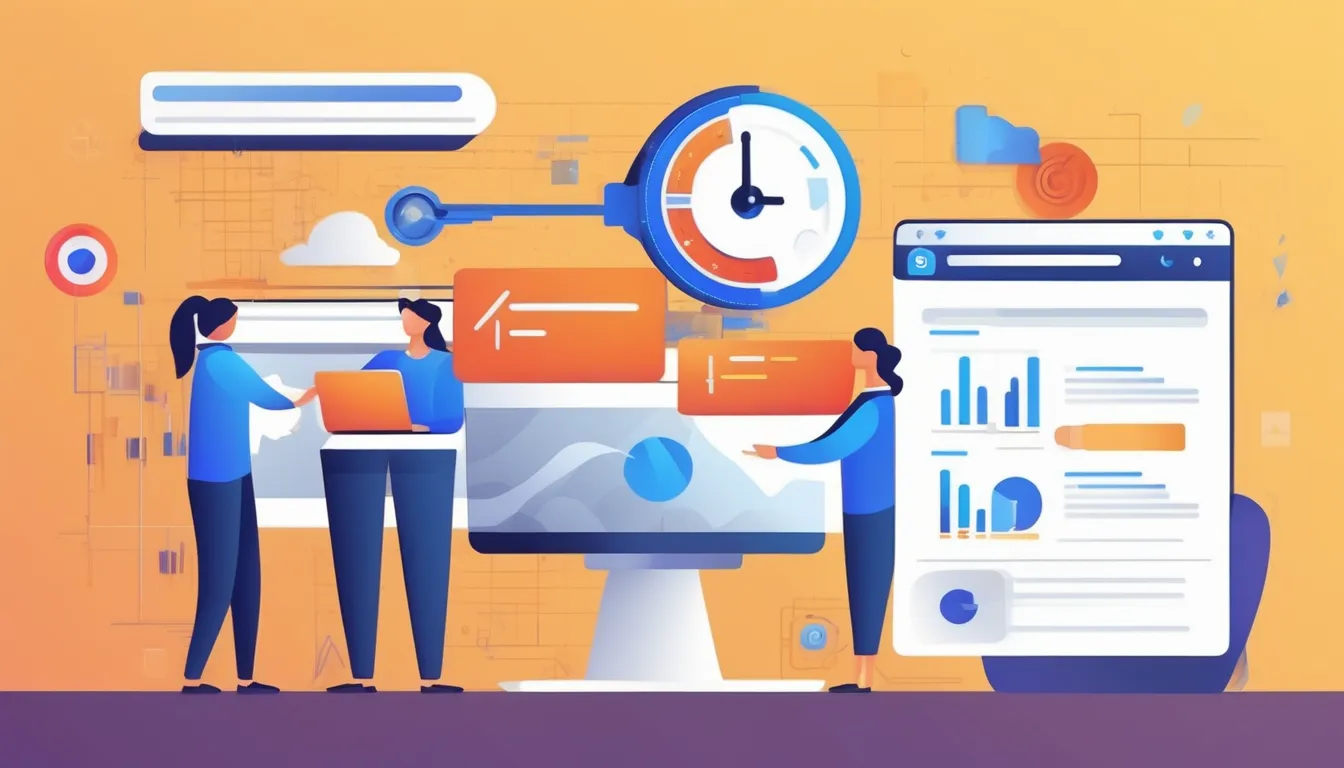If you want to keep your visitors engaged and improve your search rankings, optimizing your website’s speed is crucial. You might be surprised how simple adjustments, like optimizing images and reducing CSS, can make a significant difference. By using tools like Google PageSpeed Insights, you can pinpoint areas that need attention. But what specific techniques can you implement to ensure your site loads quickly and efficiently? The answers might be more straightforward than you think, and they could transform your website’s performance.
Understanding Google PageSpeed
To truly grasp the importance of Google PageSpeed, you need to recognize its role in your website’s performance. Google PageSpeed is a tool that evaluates how well your site loads and functions, providing critical insights that can help you enhance user experience. It measures several factors, including loading times, interactivity, and visual stability.
The faster your website loads, the better your chances of keeping visitors engaged. When users encounter slow-loading pages, they’re likely to bounce, negatively impacting your site’s search rankings. Google prioritizes user experience, and a higher PageSpeed score can lead to improved visibility in search results.
By focusing on optimizing your site based on PageSpeed insights, you can create a smoother browsing experience that encourages users to stay longer. Moreover, a well-optimized site can also lead to higher conversion rates, as customers appreciate websites that load quickly.
Understanding Google PageSpeed is essential for anyone serious about improving their website’s performance. As you dive deeper into optimizing your site, keep in mind that every second counts; thus, enhancing your PageSpeed is a vital step towards achieving overall website success.
Key Factors Affecting Website Speed
Understanding Webseiten-Ladezeit verbessern PageSpeed sets the stage for recognizing the key factors that impact your website’s speed.
First, consider your hosting service. A reliable and fast server can significantly reduce loading times. If you’re using shared hosting, it might be time to upgrade to a dedicated or VPS solution.
Next, look at your website’s design. Overly complex layouts with heavy graphics can slow you down. Opt for a clean, minimalist design that prioritizes performance.
Additionally, image optimization is crucial. Large image files can drastically increase load times, so compress images without sacrificing quality.
Another factor is the use of plugins and scripts. Too many plugins can lead to bloat, making your site sluggish. Regularly audit your plugins and remove any that are unnecessary.
Similarly, ensure that your code is clean and well-structured. Minify CSS and JavaScript files to reduce file sizes and enhance load speeds.
Lastly, consider your website’s caching strategy. Implementing browser caching allows returning visitors to load your site faster by storing some data locally.
Analyzing Your Current Performance
Website performance analysis is crucial for pinpointing areas that need improvement. To start, you’ll want to assess your website’s current speed using tools like Google PageSpeed Insights, GTmetrix, or Pingdom. These tools provide valuable insights into your site’s loading times and overall performance scores.
Once you’ve run your tests, look closely at the metrics provided. Pay attention to the time it takes for your site to load, especially on mobile devices, as this can significantly impact user experience. You should also note the largest contentful paint (LCP) and first input delay (FID) metrics, as they indicate how quickly users can see content and interact with your site.
Next, identify any elements that are causing slowdowns. Are there large images that need compressing? Maybe some scripts are blocking rendering? Document these issues so you can address them later.
Lastly, keep track of your performance over time. Regularly analyzing your site can help you spot trends and pinpoint new problem areas as they arise. With a clear understanding of your current performance, you’re well on your way to making effective improvements.
Effective Optimization Techniques
Speed optimization techniques can significantly enhance your site’s performance and user experience. Here are some effective strategies you can implement right away.
- Image Optimization: Resize and compress images to reduce their file size without sacrificing quality. Use formats like WebP for better compression.
- Minify CSS and JavaScript: Remove unnecessary characters, spaces, and comments from your code. This reduces file sizes and improves loading times.
- Leverage Browser Caching: Set expiration dates for static resources so returning visitors won’t have to download them again.
Here’s a quick overview of these techniques:
| Technique | Benefits | Tools to Use |
|---|---|---|
| Image Optimization | Faster load times | TinyPNG, ImageOptim |
| Minify CSS and JavaScript | Smaller file sizes | UglifyJS, CSSNano |
| Leverage Browser Caching | Improved user experience | .htaccess, Cache-Control |
Monitoring and Maintaining Speed
Regular monitoring and maintenance are crucial for keeping your site’s performance at its peak. You can’t just optimize your website once and forget about it; ongoing checks are essential to ensure speed remains optimal.
Start by using tools like Google PageSpeed Insights or GTmetrix to regularly measure your site’s performance. These tools provide insights on loading times and suggest improvements.
Next, keep an eye on changes that might affect your site’s speed. This includes new plugins, themes, or updates. Sometimes, even minor updates can lead to performance issues. Make it a habit to test your site’s speed after making changes.
Additionally, monitor your site’s traffic. An increase in visitors can lead to slower load times if your server isn’t equipped to handle the extra demand. Consider upgrading your hosting plan or using a Content Delivery Network (CDN) to distribute the load more effectively.
Lastly, regularly review your images and videos. Ensure they’re optimized for the web and not slowing down your site.
Conclusion
By prioritizing Google PageSpeed optimization, you can significantly enhance your website’s performance. Focus on key areas like image compression and code minification, and regularly analyze your site’s speed using tools like Google PageSpeed Insights. Remember, a fast-loading site not only boosts user experience but also helps with search rankings. Stay proactive in monitoring your website’s speed, and you’ll keep your visitors engaged and reduce bounce rates. Start optimizing today for a smoother online experience!






